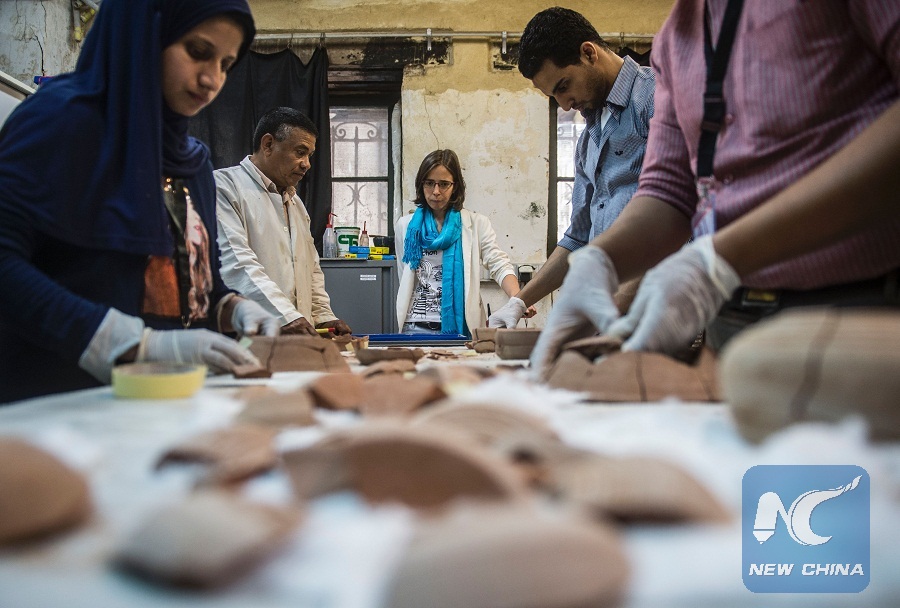
Two hundred years after Napoleon Bonaparte landed in Egypt with a retinue of scholars who laid the groundwork for modern Egyptology, scientists have continued their pursuit to unlock the secrets of the country's ancient treasures as 21st centuryh electronic devices and chemical testing are put to use in dating artefacts from the Giza pyramids to the pharaonic tombs of Luxor. (AFP Photo)
LUXOR, Egypt, Sept. 9 (Xinhua) -- Egyptian Ministry of Antiquities announced on Saturday the discovery of over 3,400-year-old New Kingdom tomb that belongs to God Amun's Goldsmith and a burial shaft housing the mummy of a lady and her two children.
The discovery was carried out by an Egyptian archaeological mission led by Dr. Mostafa Waziri, director general of antiquities in Upper Egypt's Luxor Province.
The event was attended by Egyptian Minister of Antiquities Khaled al-Anany, Luxor's governor, a number of Egyptian officials, foreign diplomats as well as local and international archaeologists.
"The excavation works started in April. We have found many objects inside the tombs such as mummies, coffins, funerary equipment, funerary masks and a big number of potteries," al-Anany told Xinhua.
He said the works at the tombs are not finished yet, adding that he is expecting to find more objects inside the burial site.
"Every discovery has its value because these discoveries help us know more about historical eras and areas," the minister noted.
Meanwhile, Dr. Waziri said the newly discovered tomb includes an entrance located in the courtyard of another Middle Kingdom tomb numbered Kampp150.
"The entrance leads to a squared chamber where a niche is found at its end," he said.
Waziri pointed out that the tomb has two burial shafts: the first one is located to the right of the chamber, while the other is seven meters deep where a collection of mummies, funerary masks and a collection of statuettes of the tomb's owner and his wife were found.
"In the courtyard, the mission stumbled upon a group of burial shafts which probably date to the Middle Kingdom," Waziri explained.
"In one of them, the mission unearthed a family burial of a woman and her two children," he added.
A collection of 150 ushabti figurines carved in faience, wood, burned clay, limestone and mud brick were also unearthed.
The mission also unearthed a collection of 50 funerary cones, 40 of which are evidence of the presence of other tombs belonging to four officials.
As one of the most ancient civilizations, Egypt has been hard at work to preserve its archaeological heritage.
In an attempt to revive the country's ailing tourism sector, which has suffered from an acute recession in the past few years due to political turmoil and security issues, Egypt is keen to uncover the Pharaohs' archaeological secrets as well as other ancient civilizations throughout the country.

